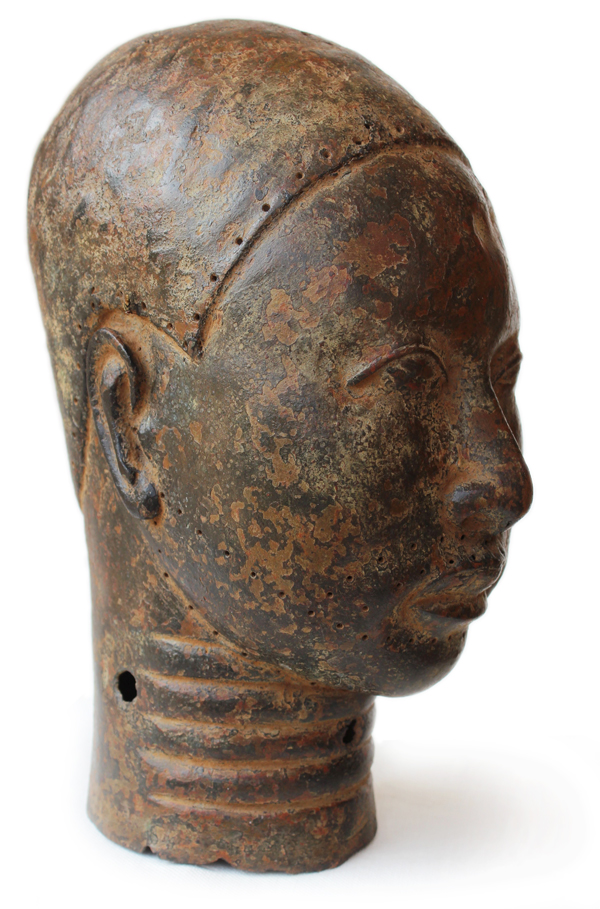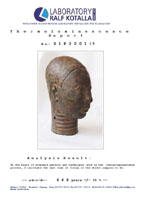Galerie Peter Herrmann
|
 |
| Thermoluminescence - Expertise |
Head
Ife-Style, Nigeria |
| Edited since Feb. 2015 |
Head: |
|---|
When the first Ife head was discovered by Leo Frobenius in 1910, so great was the surprise at its quality and workmanship that though its physiognomy and imagery very clearly indicated an African origin, it was nonetheless attributed to a Greek colony. At the latest since Willett’s publications, however, nobody doubts the African origins. The physiognomy of this Ife head demonstrates the foundries’ high commitment to realism. This is clear in the eyes, the softly modelled nose and especially the ears, which are no longer only suggested, as in many Benin heads, but fully sculpturally expressed. The otherwise typical holes at the mouth and cheeks are absent, but there are holes in the neck for mounting on a wooden torso. Like marionettes, these heads were placed on clothed, life-size wooden torsos, to which they were fasted with wooden pegs through the holes in their necks. The holes at the hairline may have been used for fastening a tiara. For a long time, the high quality of the Ife heads led many to believe that the origins of the bronze casting tradition in West Africa could be found in Ife. But as ethnologist Stefan Eisenhofer has conclusively shown in several articles, this origins theory is far from proven. The tradition could just as well come from Benin – unlike in the area around Ife, old workshops in Benin can be traced back some 1,000 years. Typical holes at the hairline, mouth and cheeks. Remnants of a reddish brown coloring. Excavation patina. Deformations and light pitting. The overall elegance makes this piece a rare find. |
| Similar objects : | Illustration: |
| Federal Department of Antiquities, Lagos, Nigeria | Elsy LEUZINGER: Die Kunst von Schwarz-Afrika, Recklinghausen, 1972, S. 151. |
| Ife Museum für Ife-Altertümer |
Schätze aus Alt-Nigeria. Ministerium für Kultur, Berlin (Ost) 1985, S. 116. |
Frank WILLETT: Ife. Metropole afrikanischer Kunst, Bergisch Gladbach 1967, S. 37. |
| British Museum, London | William B. FAGG: Bildwerke aus Nigeria, München 1963, S. 39. |
Till Förster: Kunst in Afrika, Köln 1988, S. 2. |
| Ife Museum für Ife-Altertümer (Kopie) | Ekpo EYO, Frank Willett: Kunstschätze aus Alt-Nigeria, Mainz 1983, S. 21. |
| Schmuckmuseum Pforzheim (Ausstellung, 28. Mai bis 27. August 2000) | Ife, Akan und Benin. Westafrikanische Kunst aus 2000 Jahren, Pforzheim 2000, S. 43. |
